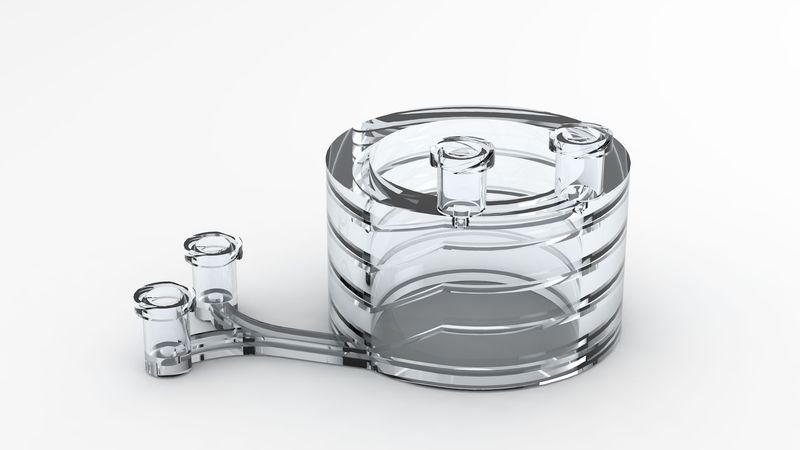Selecting the Right Material for 3D Printing
This industrial 3D printing white paper explores the properties of thermoplastic and metal materials available with stereolithography, selective laser sintering, and direct metal laser sintering technologies. It also includes a quick-reference guide of material attributes.
Materials must be suited to the application in order to have successful results. The properties of any material become increasingly important as a product progresses from concept and functional prototyping to production.
However, material properties can only be evaluated when the manufacturing process is considered. It is the combination of the material and the process that dictates the characteristics. For example, an alloy processed by die casting has different properties when it is metal injection moulded. Likewise, a thermoplastic will have different properties if it is injection moulded or CNC machined.
Additive manufacturing (AM), or 3D printing, is unique. It is different from all other manufacturing processes, so the material properties and characteristics of parts that it produces are different, even when using a nearly identical alloy or thermoplastic. In terms of material properties, it is not a matter of being better or worse; it is simply important to recognise that the results will be different.
Recognising that there is a difference, the following information will aid in the characterisation, and ultimately the selection, of materials from three widely used industrial 3D printing processes: direct metal laser sintering (DMLS), selective laser sintering (SLS), and stereolithography (SL).
Material Advancements
The materials used in 3D printing have been improving, as would be expected. These advancements have allowed the technology to move beyond models and prototypes to functional parts for testing, shop floor use, and production.
And while the output of 3D printing is different from that of other manufacturing processes, it can offer a suitable alternative when seeking a direct replacement. Yet, its advantages increase when users experiment with the possibilities that it offers.
However, experimentation is a bit challenging because of 3D printing’s differences that extend beyond, but are related to, material properties. For example, additive materials lack the rich set of performance data that characterise a material over a range of conditions. Instead, 3D printing users are presented with a single data sheet that contains a limited set of values. Those values are also likely to present a best case scenario based on testing of virgin material (unrecycled powders), for example.
Another complication is that 3D printing produces anisotropic properties where the values differ for the X, Y and Z axes. The degree of anisotropism varies with each additive technology—direct metal laser sintering is the closest to isotropic, for example—but it should always be a consideration.
However, the material suppliers rarely publish material specifications that document the change in properties from one axis to another, as the data behind these specifications can vary greatly by material, process, and even type of machine.
By designing for the 3D printing process and adjusting the build orientation, anisotropism or inadequate material properties can be overcome. To do this, leverage the experiences from past projects or that of a qualified service organisation to fill in the data gaps that exist because of the limited material properties data. When performance is critical, also consider independent lab testing of additive materials.
While success is dependent on material properties, they are not the only considerations. Each additive material and build process will also dictate characteristics such as maximum part size, dimensional accuracy, feature resolution, surface finish, production time, and part cost. So it is advised to select a suitable material and then evaluate its ability to meet expectations and requirements related to time, cost, and quality.
Material Selection
Generally, one or two material properties distinguish an additive material from all others. For example, if seeking the average tensile strength of polyamide (PA) 11, a stereolithography photopolymer may be a better option than a selective laser sintering PA. Conversely, if the heat deflection temperature (HDT) of an ABS is needed, the best option would be a sintered nylon.
Recognising that a few properties will separate one material from the others, the recommended approach for selecting a material for 3D printing is to first define what mechanical or thermal properties are critical. Then review the material options to find a fit. With the options narrowed, review other remaining properties to determine if the material will be acceptable for the project.
Since 3D printing is unique, a goal of finding a perfect match to a cast, moulded or machined material is ill-advised. Instead, investigate the material options to find the material that satisfies the most critical requirements.
Click here to continue reading about selecting the right 3D printing material for your project
